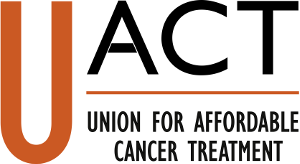Today President Trump promised (again) that he would bring down drug prices and put American patients first.
The administration’s approach is to change how Medicare Part B (coverage available as an option for American residents when they are 65 years old or older, or if they qualify through a disability) pays for some of the most expensive prescription drugs, and attempts to imitate (irony alert) what President Trump blames other countries for doing: negotiating prices for their citizens, based largely upon the foreign prices themselves.
A planned “international pricing index” (IPI), would cap certain Medicare Part B drug prices to an index from 16 other nations — Austria, Belgium, Canada, Czech Republic, Finland, France, Germany, Greece, Ireland, Italy, Japan, Portugal, Slovakia, Spain, Sweden and the United Kingdom. Several of these countries should not be on the list. For example, Greece, Portugal, the Czech Republic and the Slovak Republic all had per capita incomes less than $20,000 per year in 2017, compared to $58,270 for the United States.
We all welcome plans to lower seniors’ prescription drug costs and provide relief from excessive prices. However, we are disappointed that the changes will be slow (beginning in 2020 and phased over 5 years), would only cover some drugs on Medicare Part B, and even more perplexing, will only benefit selected geographical areas where about half of Medicare patients live.
The drugs covered are important, and will likely include several treatments for cancer that are “administered incident to a physician’s services,” but it will also exclude many other drugs, which are reimbursed through the larger Medicaid Part D program. Insulin, a large money maker for Lilly, appears to be excluded from the IPI pricing norms, as will nearly all drugs to treat HIV, asthma and many other illnesses.
HHS has indicated it may use a randomized approach to determine which geographies in the country would participate in the model, but it remains to be seen how random President Trump’s initiative will be.
The timing (announcing just before the midterm elections) and the 5 year phased in approach, as well as the age groups that are singled out could lead some patients think that this is a political move from an administration trying to stay in power while not doing much for the millions of patients today.
The proposed approach is too narrow to be taken very seriously but the irony of trying to achieve the drug prices currently existing in countries that are blamed for their efforts on behalf of patients is difficult to ignore.
To put the announcement in perspective, the proposed savings from the program are $17.2 billion over five years. That is equal to four percent of the $450 billion in invoiced drug sales in 2016, so it is not very impressive in terms of the size of the U.S. market.
In short, the announcement is about something that won’t take effect until 2020 at the earliest, and will only influence the price of a handful of drugs for a handful of diseases, for people 65 or older, and even then, in only half the country.
This is a weak response to a big problem.
Contact:
Manon Ress, Founder and Acting Director
manon.ress@cancerunion.org
A PDF of the statement is available here.
